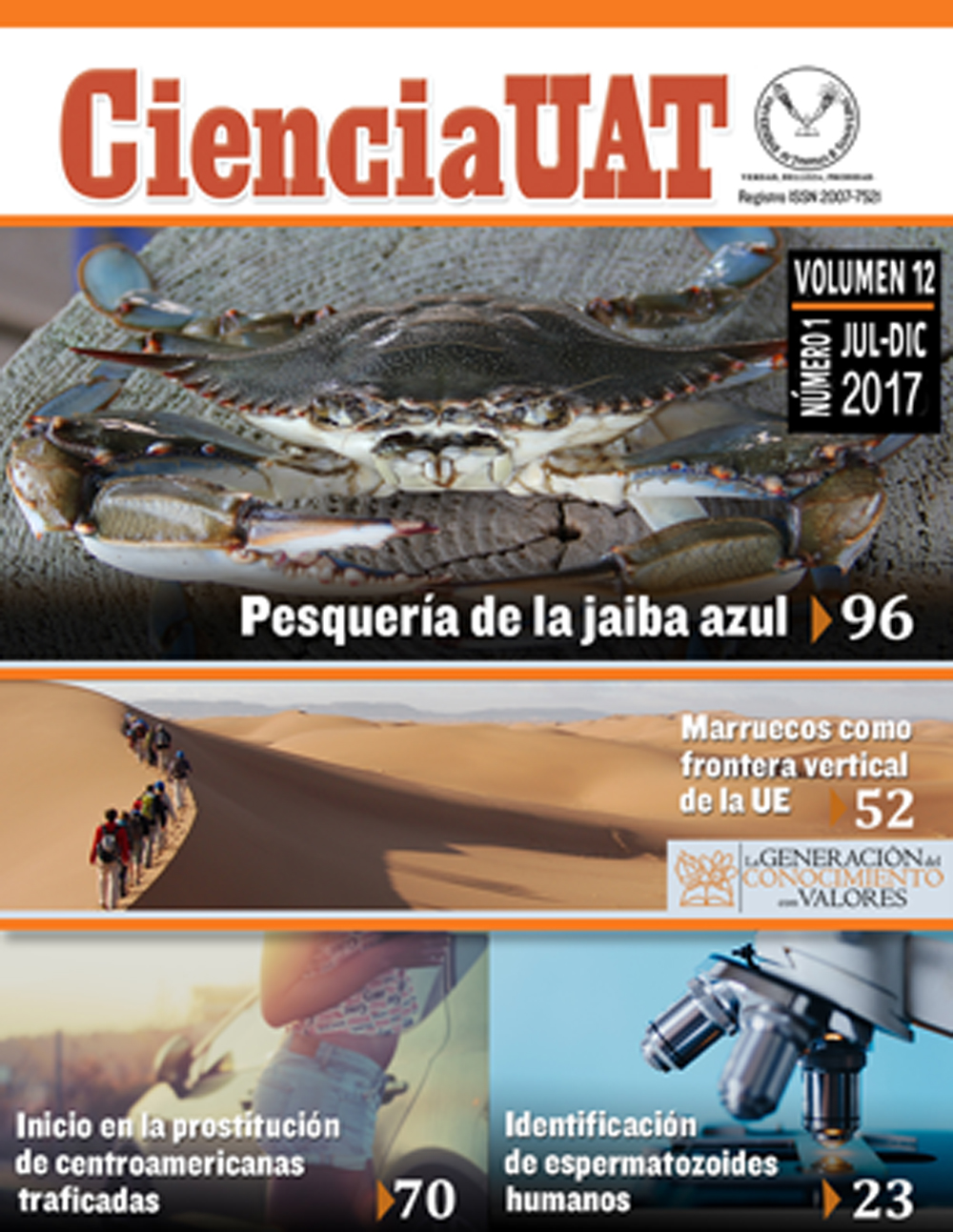Factor structure and internal consistency of the Oral Hygiene Habits Scale in general population and dental clinic samples
DOI:
https://doi.org/10.29059/cienciauat.v12i1.859Keywords:
factor structure, oral hygiene habits, general population, dental clinic population, Mexico.Abstract
The lack of oral hygiene can cause different types of conditions, such as caries, gingivitis and periodontitis. In Mexico, the use of the Oral Hygiene Habits Scale (OHHS) has recently been proposed as a diagnostic tool for the health sector. The objective of this research was to establish the internal consistency and factor structure of the OHHS, so that it can be applied in the evaluation of oral hygiene habits. In Monterrey, Mexico, a general population sample (GPS) of 256 participants and another dental clinic sample (DCS) of 240 participants were collected, using nonprobability sampling. The discriminability and internal consistency of the OHHS 10 items were verified, the internal consistency of the scale was calculated, the factor structure was explored and the invariance of the factor model across the GPS and the DCS was contrasted. The internal consistency of the OHHS increased and was high (ordinal α = 0.833 in GPS, and = 0.865 in DCS), by eliminating two repeated items: dental brushing frequency (item 1), and toothpaste use during brushing (item 3). In both samples, two factors were defined: dental floss with four items (ordinal α = 0.911 in GPS and 0.944 in DCS), and dental brushing also with four items (ordinal α = 0.628 in GPS, and 0.633 DCS). The internal consistency of the latter improved (α ordinal = 0.693 in GPS, and 0.727 in DCS), when the item 8 was included (attention paid to cleaning the interdental space). The two-factor model had good fit, and acceptable invariance properties across the two samples. We concluded that the eight-item OHHS is consistent, and the two-factor model is valid across GPS and DCS, where item eight displays a possible double interpretation.
References
American Dental Association (2017). Mouth healthy: brushing your teeth. [En línea]. Disponible en: http://www.mouthhealthy.org/en/az-topics/b/brushing-your-teeth. Fecha de consulta: 7 de enero de 2017.
Byrne, B. M. (2016). Structural equation modeling with Amos: Basic concepts, applications, and programming (Tercera edición.). New York, NY: Routledge. 437 Pp.
Campo-Arias, A., Herazo, E. y Oviedo, H. E. (2012). Análisis de factores: fundamentos para la evaluación de instrumentos de medición en salud mental. Revista colombiana de psiquiatría. 41(3): 659-671.
Courtney, M. G. R. (2013). Determining the number of factors to retain in EFA: using the SPSS R-Menu v2.0 to make more judicious estimations. Practical Assessment, Research & Evaluation. 18(8): 1-14.
Escobar, J. y Cuervo, A. (2008). Validez de contenido y juicio de expertos: una aproximación a su utilización. Avances en Medición. 6(1): 27-36.
Henseler, J., Ringle, C. M., and Sarstedt, M. (2015). A new criterion for assessing discriminant validity in variance-based structural equation modeling. Journal of the Academic Marketing Science. 43(1): 115-135.
Luján, J. A. y Cardona, J. A. (2015). Construcción y validación de escalas de medición en salud: revisión de propiedades psicométricas. Archivos de Medicina. 11(3): 1-10.
Méndez, C. y Rondón, M. A. (2012). Introducción al análisis factorial exploratorio. Revista colombiana de psiquiatría. 41(1): 197-207.
Mulaik, S. A. (2005). Parsimony/Occham’s razor. Encyclopedia of statistics in behavioral science. 2: 869-875.
Rodríguez, N. I. and Moral, J. (2016). Design and content validation of the Oral Hygiene Habits Scale. Journal of Oral Research. 5(4): 159-167.
Sabounchi, S. S., Torkzaban, P., Sabounchi, S. S., and Ahmadi, R. R. (2016). Association of oral health behavior-related factors with periodontal health and oral hygiene. Avicenna Journal of Dental Research. 8(2): e29827.
Secretaría de Salud (2014). Decreto por el que se reforman, adicionan y derogan diversas disposiciones del Reglamento de la Ley General de Salud en Materia de Investigación para la Salud, en Diario Oficial de la Federación. [En línea]. Disponible en: http://www.diputados.gob.mx Leyes Biblio/regley/Reg_LGS_MIS.pdf. Fecha de consulta: 7 de enero de 2017.
Sociedad Mexicana de Psicología (2007). Código ético del psicólogo (Cuarta edición). México: Trillas. 118 Pp.
Téllez, A., García, C. H., and Corral-Verdugo, V. (2015). Effect size, confidence intervals and statistical power in psychological research. Psychology in Russia: State of the Art. 8(3): 27-46.
Vano, M., Gennai, S., Karapetsa, D., Miceli, M., Giuca, M. R., Gabriele, M., and Graziani, F. (2014). The influence of educational level and oral hygiene behaviours on DMFT index and CPITN index in an adult Italian population: an epidemiological study. International Journal of Dental Hygiene. 13(2): 151-157.
Wilder, R. S. and Bray, K. S. (2016). Improving periodontal outcomes: merging clinical and behavioral science. Periodontology 2000. 71(1): 65–81.
Yang, Y. and Green, S. B. (2010). A note on structural equation modeling estimates of reliability. Structural Equation Modeling: A Multidisciplinary Journal. 17(1): 66-81.
Published
How to Cite
License
Copyright (c) 2017 CienciaUAT

This work is licensed under a Creative Commons Attribution-NonCommercial-ShareAlike 4.0 International License.
Accepted 2017-01-09
Published 2017-07-14











